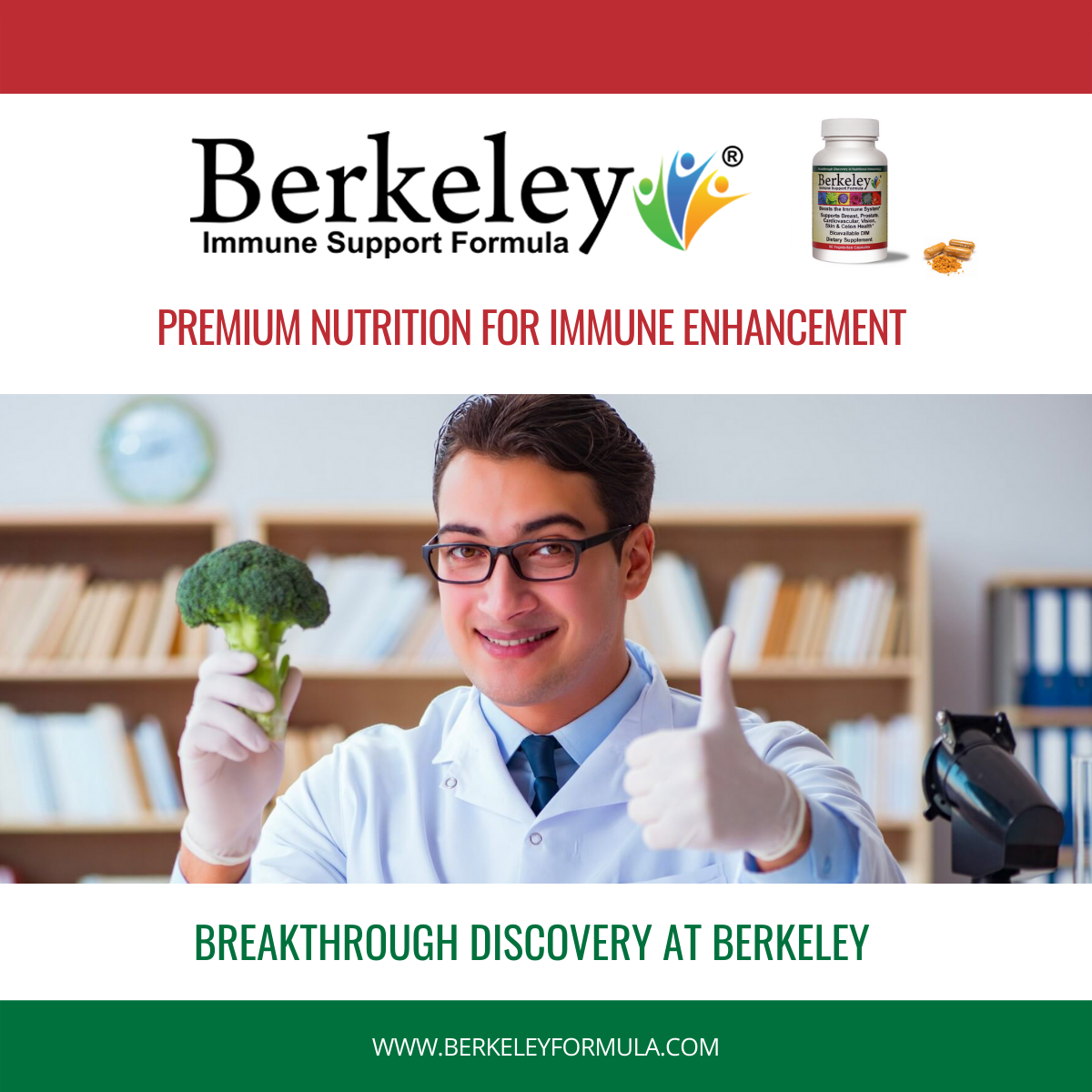Molecular Biology of Diindolylmethane (DIM)
Diindolylmethane is unique in the biomedical field in that it exhibits multiple distinct and complementary anti-cancer and immune modulating properties. These distinct and complementary modes of action are among the reasons why the National Cancer Institute has begun clinical trials of DIM as a natural therapeutic for multiple forms of cancer.
Overview of DIM's Anti-Cancer and Immune Modulating Properties
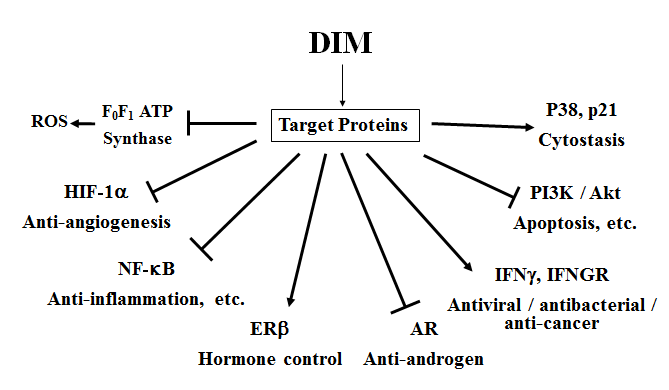
Medical epidemiologists believe that the lower risk of cancer attributed to people who consume a lot of Brassica vegetables is in part due to Diindolylmethane’s numerous anti-cancer properties. In 2001, biomedical investigators published their findings regarding Brassica vegetables and breast cancer in the Journal of the American Medical Association.1 In it they discussed their finding that women who consume just one serving of Brassica vegetables per week exhibit a 40% reduction in the risk of breast cancer development relative to those who consume very little of this vegetable group in their diet. In 2007, scientists at the National Cancer Institute published their finding that men who consume just one serving of Cruciferous (Brassica) vegetables per week reduce their risk of developing aggressive prostate cancer by up to 52%.2 Interestingly enough, in this study, no other vegetable group appeared to provide a statistically significant risk reduction for prostate cancer.
Other phytonutrients in Brassica vegetables that have also been shown to have anti-cancer properties include Sulforaphane and Selenium.
1. Brassica Vegetables and Breast Cancer Risk. Terry P, Wolk A, Persson I, Magnusson C, JAMA 2001 285 (23): 2975-2976
2. Prospective Study of Fruit and Vegetable Intake and Risk of Prostate Cancer. Journal of the National Cancer Institute. 2007 Jul 24; Krish VA, Peters U, Mayne ST, Subar AF, Chatterjee N, Johnson CC, Hayes RB
Sampling of Scientific Data on Diindolylmethane (DIM)
DIM In-Vivo Affect on Key Immune Modulating Cytokines
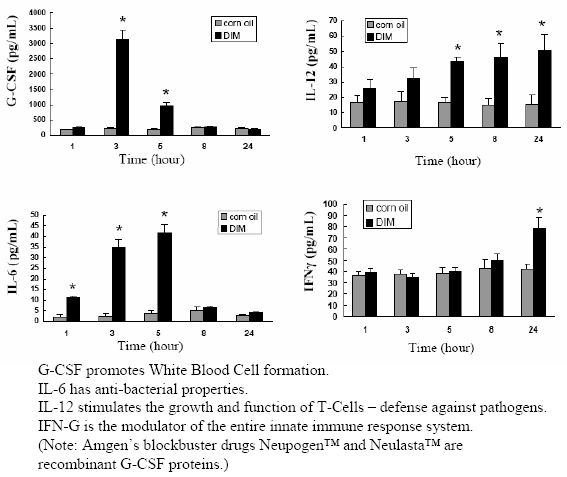
In this study DIM was administered orally at 30mg/kg of body weight.
DIM In-Vivo Anti-Viral Activity Through Immune Modulation
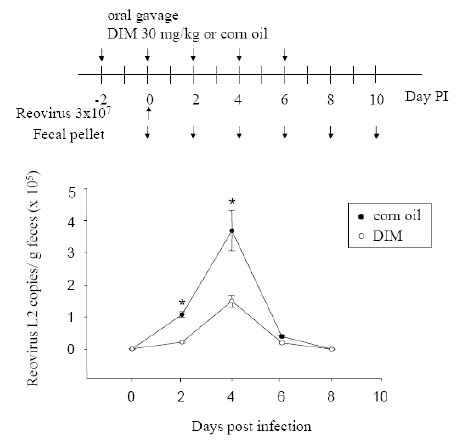
(Reference: Xue L, Pestka J, Maoxiang L, Firestone GL, Bjeldanes LF, 3,3′-Diindolylmethane stimulates murine immune function in vitro and in vivo, Journal of Nutritional Biochemistry, published online, 8-20-07.)
DIM Stimulates Transcript Expression of Interferon-γ
and Related Genes in Human Breast Cancer Cells
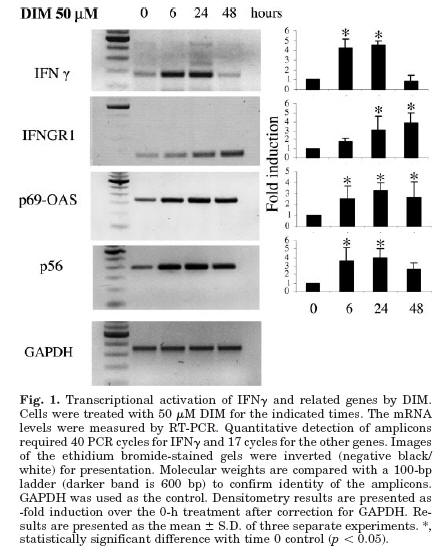
Activation and Potentiation of Interferon-γ by DIM:
Stimulation of Interferon-γ Receptor 1 Production
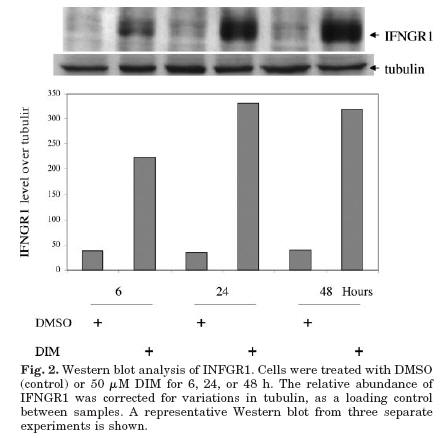
Potentiation of Interferon-γ Mediated Cell Cycle Arrest by DIM
in Human Breast Cancer Cells
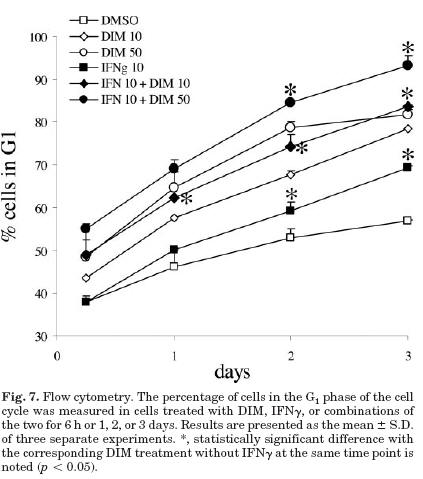
DIM Enhances Interferon-γ Induced Expression of MHC-I Complex
in Human Breast Cancer Cells
(Please Note Section D of this figure. DIM may be used as an adjuvant to IFN-γ treatment
models because of this unique synergistic effect on the MHC-I Complex. This synergy is
currently under investigation for HIV, HPV, Hepatitis and multiple forms of cancer.)
(Please Note Section D of this figure. DIM may be used as an adjuvant to IFN-γ treatment models because of this unique synergistic effect on the MHC-I Complex. This synergy is currently under investigation for HIV, HPV, Hepatitis and multiple forms of cancer.)
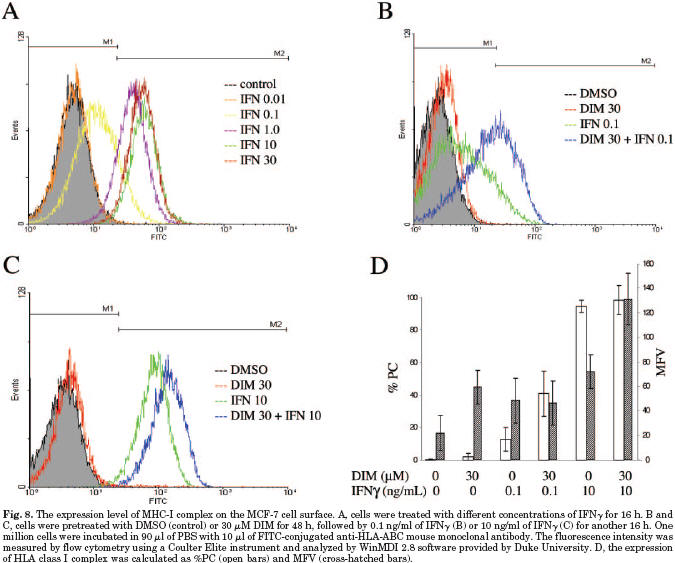
(Reference: Riby JE, Xue L, Chatterji U, Bjeldanes EL, Firestone GL, Bjeldanes LF, Activation and Potentiation of Interferon-(gamma) Signaling by 3,3′-Diindolylmethane in MCF-7 Breast Cancer Cells, Molecular Pharmacology, Nov. 2, 2005)
DIM and Taxol Synergize to Promote Apoptosis
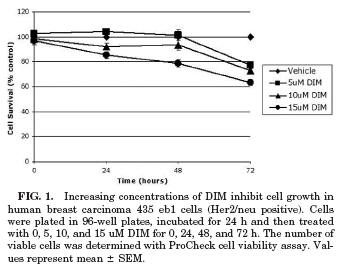
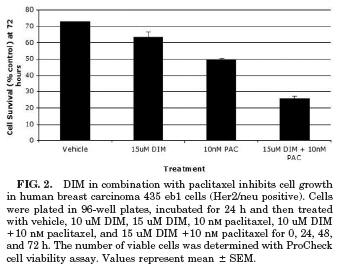
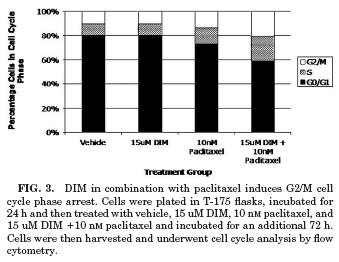
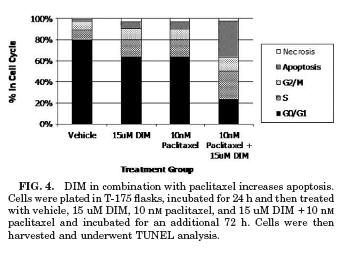
(Reference: K. McGuire, N. Ngoubilly, M. Neavyn, S. Lanza-Jacoby. 3,3′-Diindolylmethane and Paclitaxel Act Synergistically to Promote Apoptosis in HER2/Neu Human Breast Cancer Cells. Journal of Surgical Research, 2006 May 15;132(2):208-13. Department of Surgery, Jefferson Medical College, Thomas Jefferson University, Philadelphia, Pennsylvania 19107)
In-Vivo Animal Study: DIM Inhibits DMBA-induced
Mammary Tumor Growth
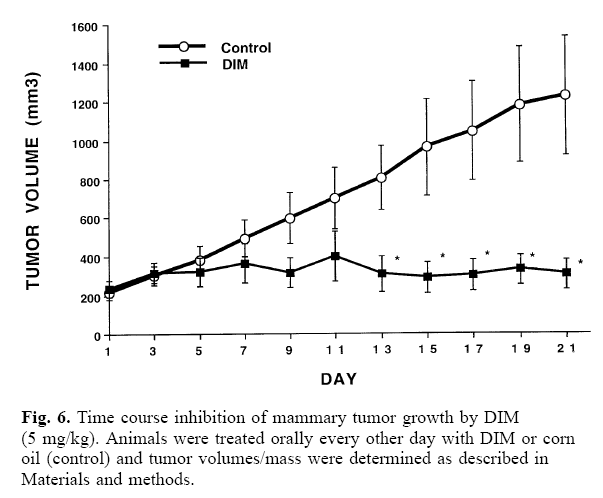
(Reference: Chen I, McDougal A, Wang F, Safe S, Carcinogenesis, vol. 19, no.9. pp.1631. 1998.)
In-Vivo Animal Study: DIM Inhibits Growth of Human Mammary
Tumor Cells in Athymic Mice
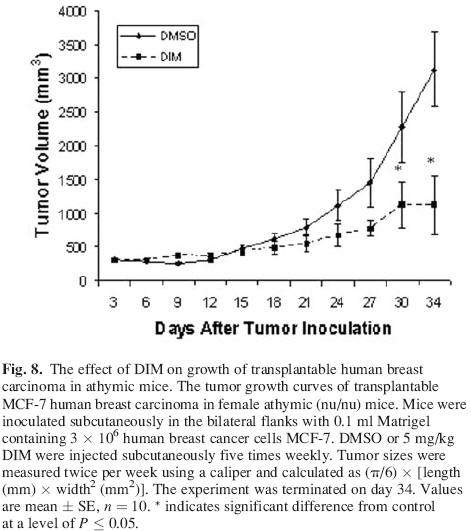
(Reference: Chang X., Tou J.C., Hong C., Kim H.A., Riby J.E., Firestone G.L., Bjeldanes L.F., Diindolylmethane inhibits angiogenesis and the growth of transplantable human breast carcinoma in athymic mice, Carcinogenesis, Janurary 2005, pp.771-778.)
News Brief From Berkeley
A Bioavailable Diindolylmethane Immune Support Formula has been launched with technology exclusively licensed from UC Berkeley as a fund-raiser for nature-based cancer therapeutics research. For more information about this formula, please visit: www.BerkeleyFormula.com.

